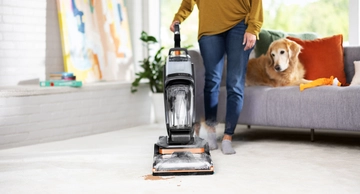The Complete Guide to Water Chemistry for Swimming Pools
Keeping the chemicals properly balanced in your pool not only keeps the water safe to swim in, but it extends the life of the pool itself. Although most pools are made of concrete, a pool that is too acidic can not only burn your eyes, but also corrode the surface of the pool, potentially causing you thousands of dollars in the long term. Water that is too base or alkaline causes scale to develop in key places of the pool system, which proves to be another costly issue.
In this article, we’ll learn how to maintain optimum water balance in a pool so we don’t experience any expensive, painful, and easily avoidable pool problems. We’ll discuss chlorine, alkalinity and Ph. We’ll also discuss cyanuric acid (CYA), an agent that keeps the sun from destroying the effectiveness of chlorine. By the time you’re done reading this article, you should be able to maintain your pool by yourself and know about pool filter valve positions, saving yourself some serious time and money.
The Role of Cyanuric Acid
Be careful of CYA. In high concentrations, it greatly diminishes the effectiveness of chlorine. The only way to decrease the ppm ratio in the water is to drain the pool, and that’s a costly process that also happens to be a major time-consuming pain! CYA comes in the chlorine sticks that most people use to maintain chlorine levels. It also comes in some types of granular chlorine.
In addition, be sure to purchase a test kit that states that it specifically tests for CYA levels. Pool supply stores will certainly have these in stock. There are different studies that suggest different parameters to maintain, but the most important thing to the overall health of your pool is that the CYA levels don’t get too high.
Keep an Eye on Calcium Hardness and Alkalinity
Before fretting over Ph measurements, measure alkalinity and calcium hardness. Calcium hardness should be maintained between 200 and 500 ppm. It is obviously raised by adding calcium. Be careful with calcium- like CYA, calcium hardness can only be lowered by draining water from the pool. Don’t go too high with it!
Alkalinity should be kept between 80 to 120 ppm. It’s raised by adding the very common sodium bicarbonate (baking soda) to the water. Decrease it by adding muriatic acid (also known as hydrochloric acid) to the water. Once calcium and alkalinity are within the proper parameters, you can check the Ph of the pool. Ph should be maintained between 7.2 and 7.8. It can be lowered by adding muriatic acid.
Available chlorine should be maintained between 1 and 3 ppm. Chlorine sticks are the favorite for maintaining chlorine levels, and happen to be very easy to use. Simply put them in the chlorine stick dispenser as needed. It is best to keep it full and adjust the feed to keep the chlorine at the desired level.
Pool “Shock” Factor
Depending on the number of swimmers over a period of time, a pool may need to be “shocked” from time to time. This is done by raising the level of chlorine by 10 times the combined chlorine (CC) in the water. CC is found by subtracting free chlorine (FC) from total chlorine (TC).
If the shocking process seems complicated, don’t do it without help- serious issues can occur if you’re not 100% sure that you did it right. Luckily, most pool chemical suppliers will test a sample of your pool water for you. By determining the number of gallons of water in your pool, they can tell you exactly what you need to use and how much of it. Remember- improper pool chemistry can cause skin and eye problems, so it’s important to get it right the first time.
Your pool installer should let you know how many gallons of water your pool holds. If not, a close approximation can be made by measuring the dimensions of the pool. It is also reassuring to know that your pool chemical dealers can help you with maintaining all your water balance needs with a sample. Of course, maintaining the chemistry of your pool’s water is more difficult than simply hiring a pool service company- but you will end up spending a lot less if you do it yourself and do-it-yourselfers will find the pool maintenance process to be an enjoyable ongoing project.
As you work with your pool more and more, you’ll acquire a “knack” for keeping it maintained. Until then, don’t be ashamed to ask for an expert’s advice. Many, if not most, pool chemical suppliers will check your water sample for free. In return they know you’ll come to them with all your swimming pool related needs. Even if you plan on maintaining your pool yourself, it is good to at least have a pool service company on speed dial just in case!
Lena Carson is an interior designer and published home and garden writer from Tucson, Arizona. She loves helping people achieve their interior design visions!


